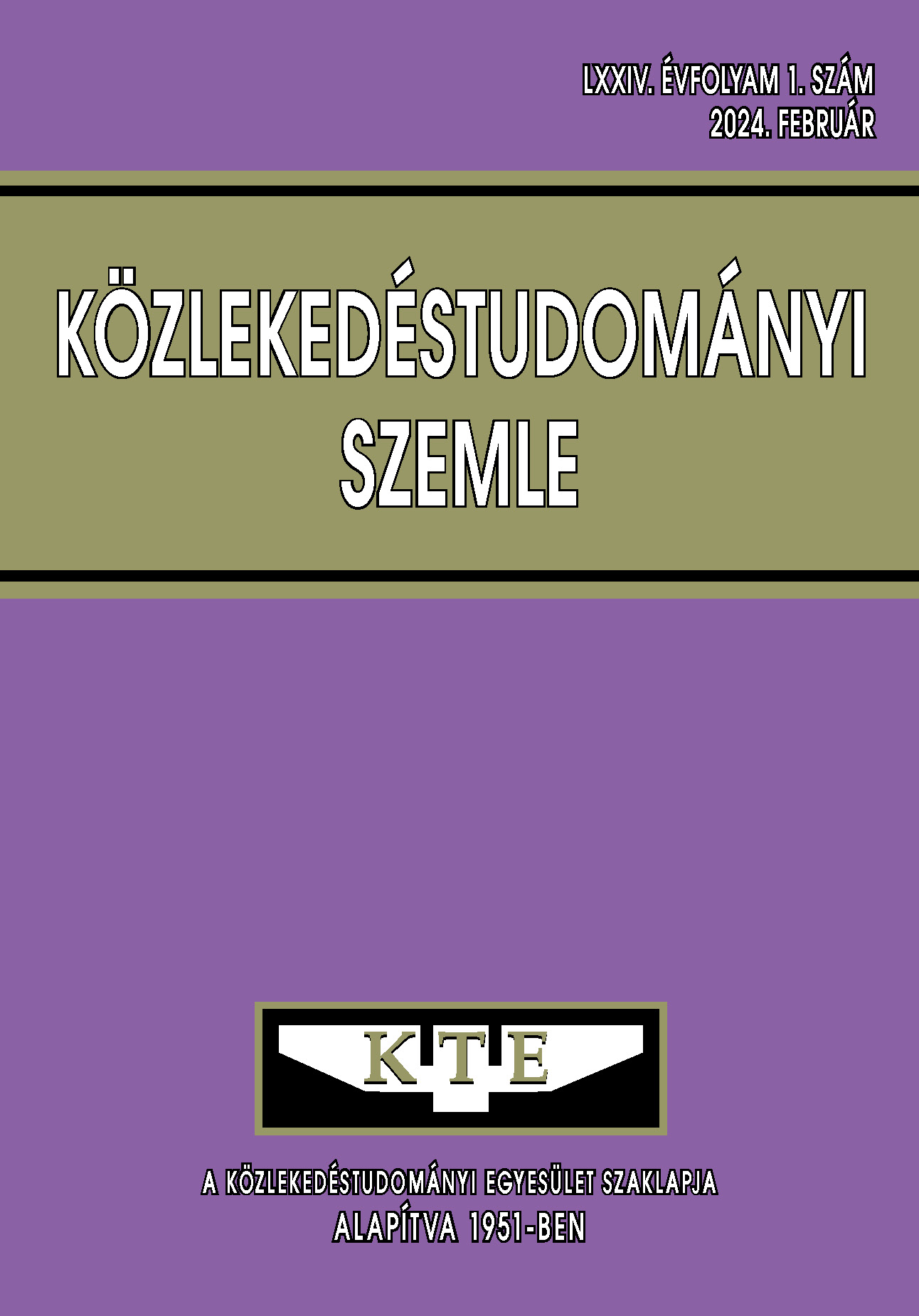The railway strategy
Abstract
Rail transport is a large and complex network system, so adequate results from a strategy can only be expected in the long term. Therefore, the task of the business and development strategies to be developed by the railways is to lay the foundations for change and to adapt to new environmental conditions and needs. The Swiss and Austrian railway strategies of the last decades serve as a good model for other European countries because they have used instruments that have effectively ensured the achievement of their set goals. The recently developed and implemented Hungarian railway strategies typically derive their strategic action plans from the availability of financial resources, thereby limiting the possibility of adaptation to environmental conditions and development. Strategies for the future of the European railway system should strengthen cooperation between individual railway companies
and technological development in order to increase the share of rail in transport.
References
Dr. Rixer Attila, Turi József István: A korszerű vasúti stratégiai tervezés módszertani alapelemei – a legjobb gyakorlatok Európában, Közlekedéstudományi Konferencia Győr 2016. ISBN 978-615-5298-82-0 189-204. o.
Andreas Meyer, Christoph Tyssen: Ein Konzert für unsere Kunden – Komplexitätsmanagement in der SBB AG – Unternehmerisches Management Herausforderungen und Perspektiven ISBN 978-3-258-07770–3
Dr. Thomas Bickel, Eric Cosandey, Hansruedi Akermann: Deciding for the right timetable production system – EURAILmag Business & Technology 2010/22 (https://sma-artner.com/storage/app/media/Dokumente/Veranstaltungen%20und%20Publikationen/Richtige-Fahrplankonstruktionssystem_de.pdf)
Hauke Fehlberg: Warum fährt der Schweizer mehr Bahn als jeder andere Europäer? – Berlin, 2008. 06. 25.
Christian Kräuchi, Ueli Stöckli: Mehr Zug für die Schweiz: Die Bahn-2000-Story ISBN: 978-3909111060 AS Verlag 2004
Georges Rey: Entwicklung des ITF von den Anfängen bis zur Gegenwart – SMA und Partner AG; EISENBAHNTECHNISCHES KOLLOQUIUM 2007.
Magyar Királyi Államavasutak: Javaslat a Magyar Királyi Államvasutak hálózatán a háború lezajlását követő legközelebbi években szükséges beruházásokról és a hálózat továbbfejlesztéséről, Budapest, 1916.
Stratégia Konzorcium: Nemzeti Közlekedési Infrastruktúra-Fejlesztési Stratégia 2014. augusztus (https://2015-2019.kormany.hu/download/3/a8/10000/Nemzeti%20K%C3%B6zleked%C3%A9si%20Infrastrukt%C3%BAra-fejleszt%C3%A9si%20Strat%C3%A9gia.pdf)
Kisteleki Mihály: Volt egyszer egy VATUKI, Vasútgépészet 2018/1.
M. Nold, B. Büchel, F. Leutwiler, S. Lotz, A. Marra, F. Corman: Studie – Technologische Weiterentwicklung des Bahnsystems 2050 (IVT, ETH Zurich im Auftrag des Bundesamtes für Verkehr)
https://www.reddit.com/r/trains/
comments/820c7f/rare_moment_of_a_
french_tgv_coupled_with_a_german/
Articles published electronically are open access (OJS), freely available online and can be downloaded. Authors of articles are not charged any publication or publishing costs (APC). Users have the right to read, download, copy, print, and search the articles, or share the full text with a link.
Authors must declare that their submission has not been previously published in another journal, that financial support has been acknowledged, and that the list of references is complete and accurate, including specification of URLs and DOIs (if available). When submitting a draft article, each author approves the submitted version. Authors guarantee that the article is their original work. Authors are required to participate in the peer review process, follow the advice of reviewers, meet the prescribed deadlines, and, if any, withdraw the submission or correct errors.
All submitted articles are subject to peer review, where the editors request an independent evaluation from at least one expert, ensuring that the reviewer(s) have no conflicts of interest with the authors. The final decision is made by the Editor-in-Chief, who takes into account the evaluations and the suggestions of the editors. The editors and reviewers treat the submission confidentially.
The publisher and editors are committed to maintaining high ethical standards and to preventing publications that involve research misconduct. They follow the COPE guidelines on such ethical issues.
The authors retain copyright and grant the journal the right of first publication under the Creative Commons License (https://creativecommons.org/licenses/by-nc-nd/4.0), which allows others to share the work, while acknowledging the authorship of the work and the first publication in the journal.
The journal archives all published articles, and the journal's owner, the Hungarian Society of Transportation Sciences, will continue to operate the database even if the journal ceases to be published.















